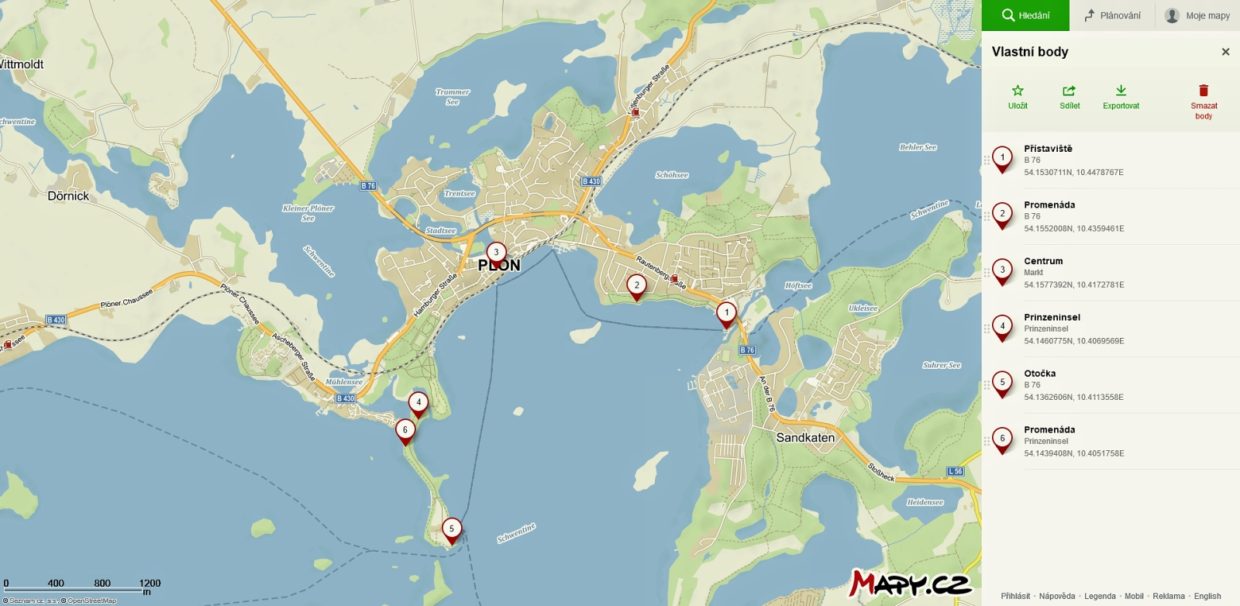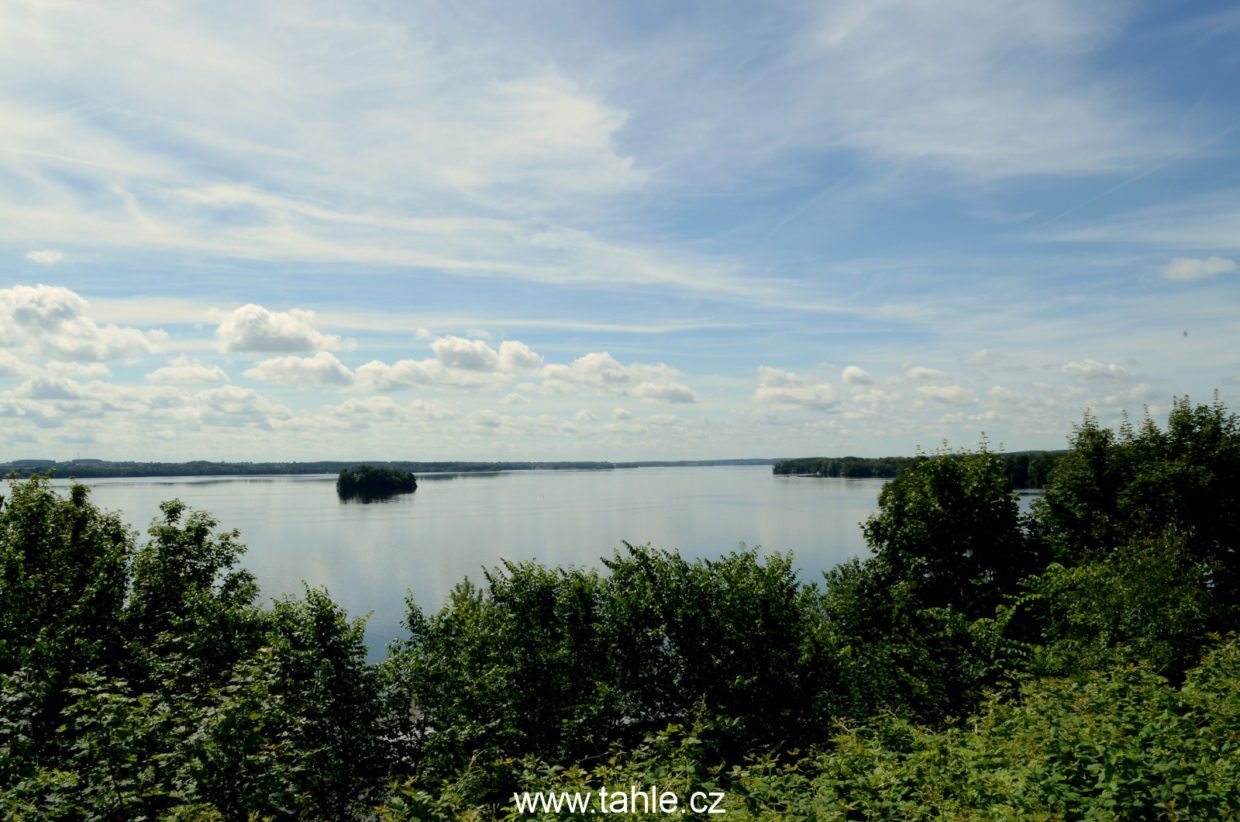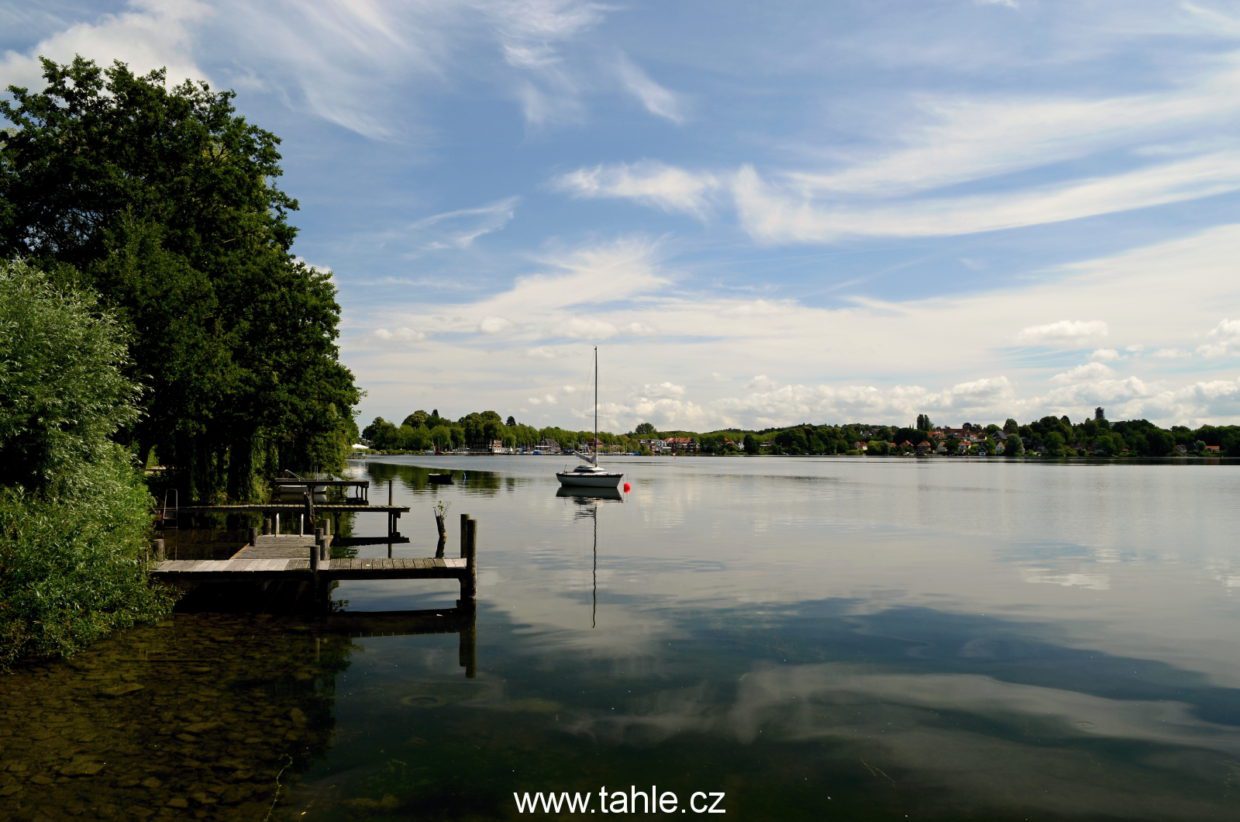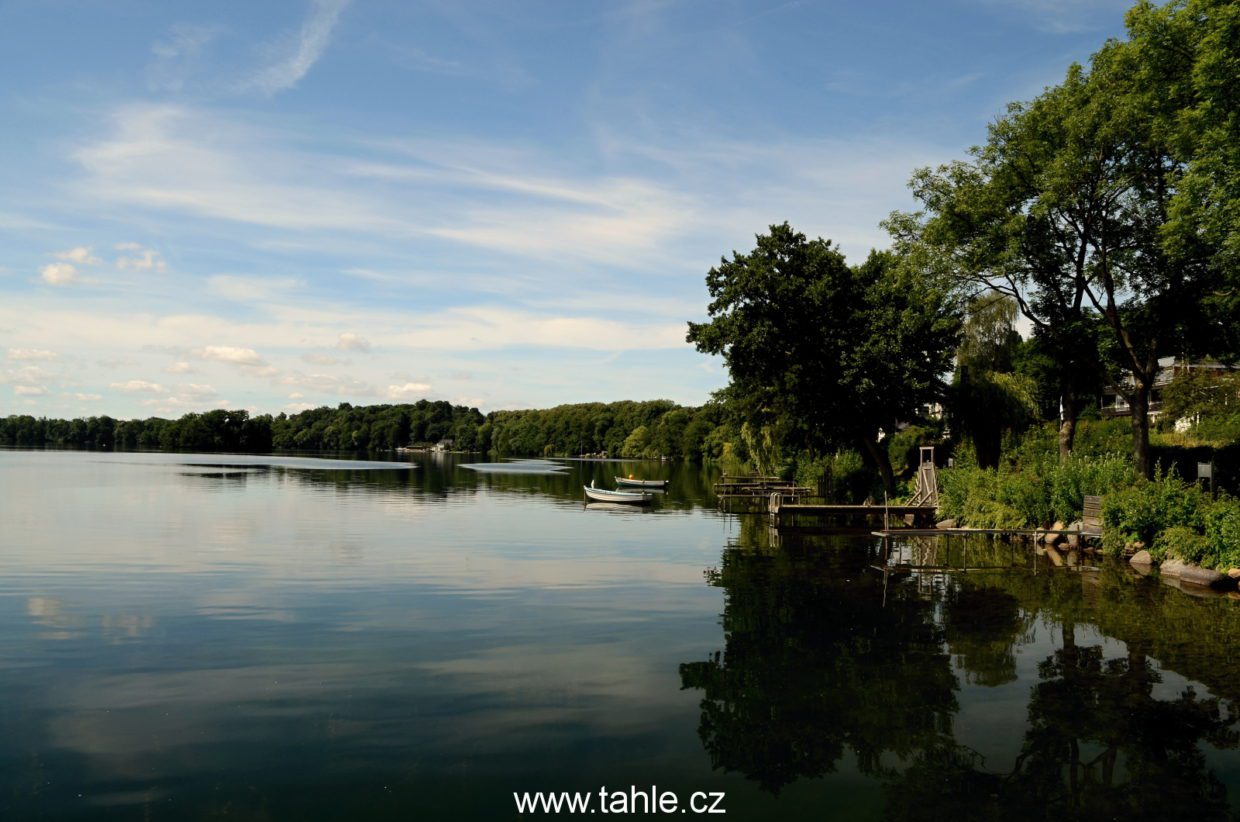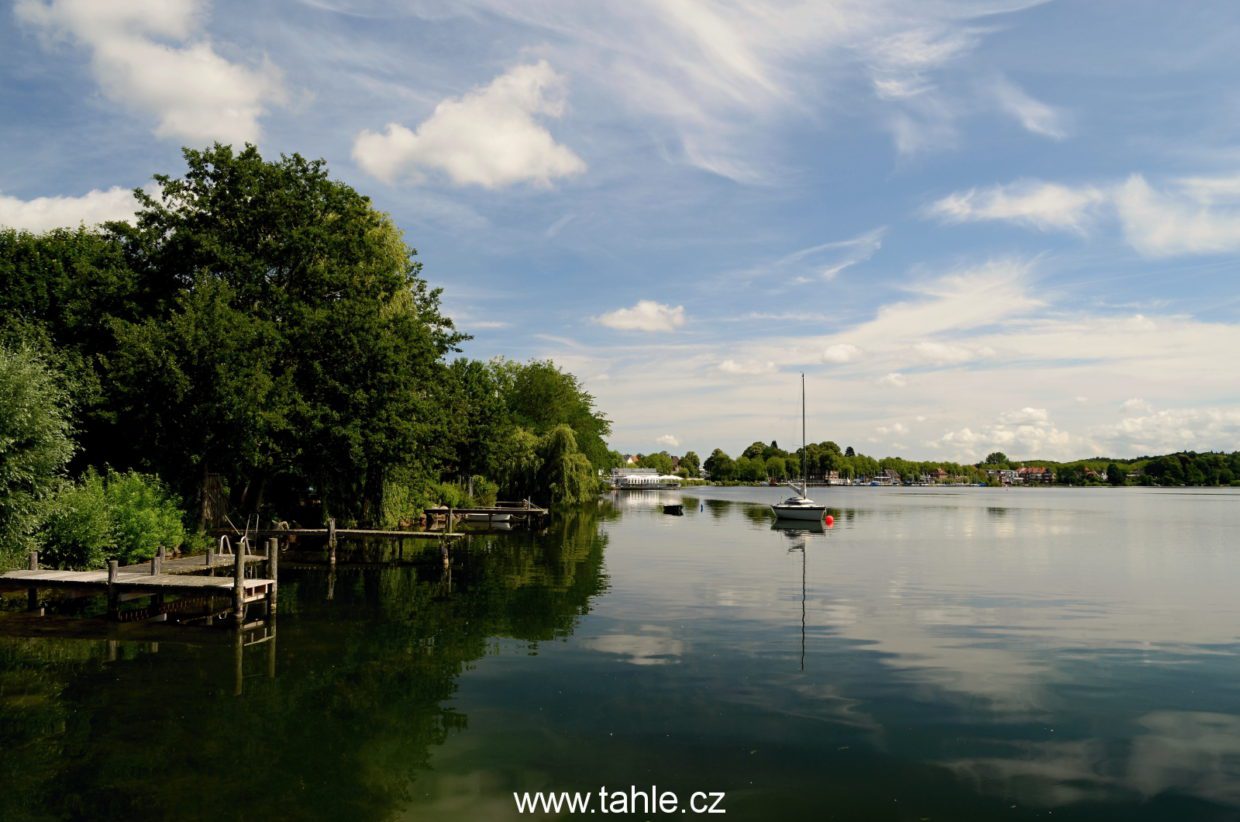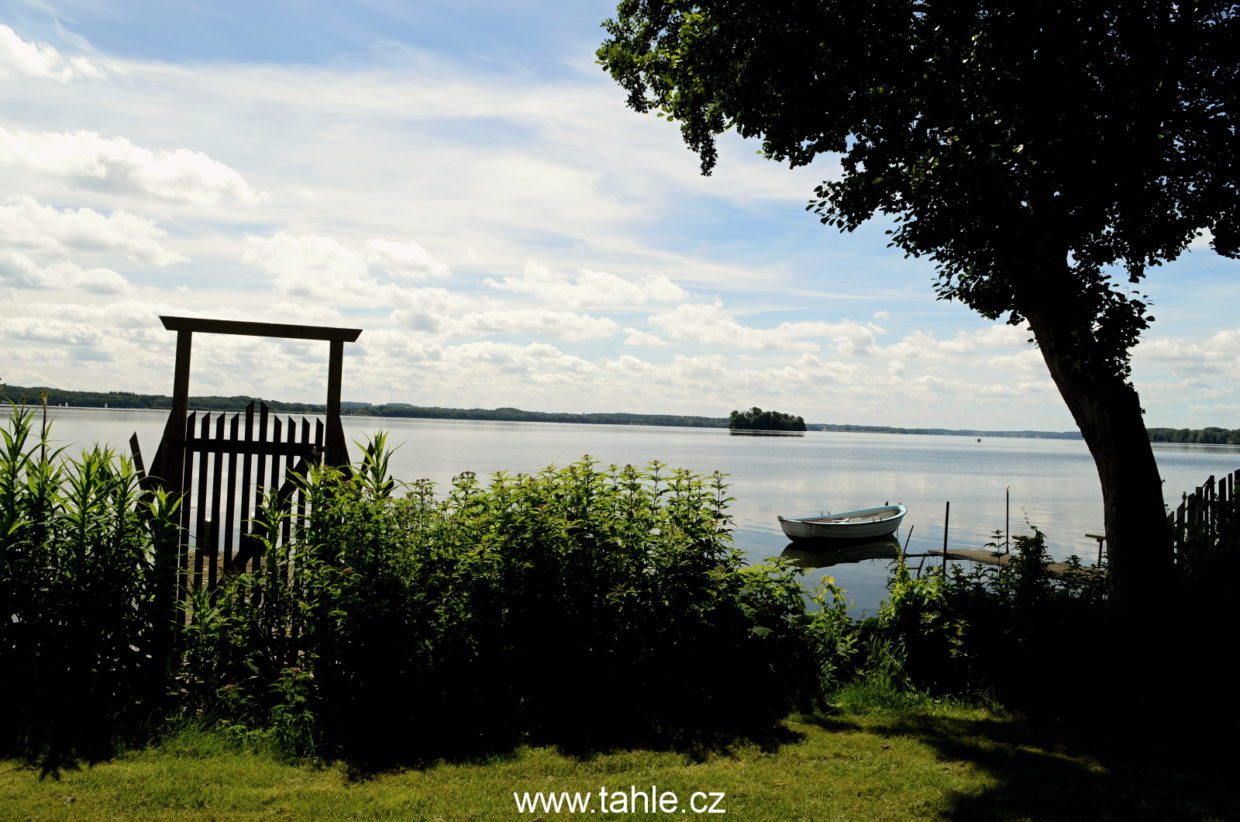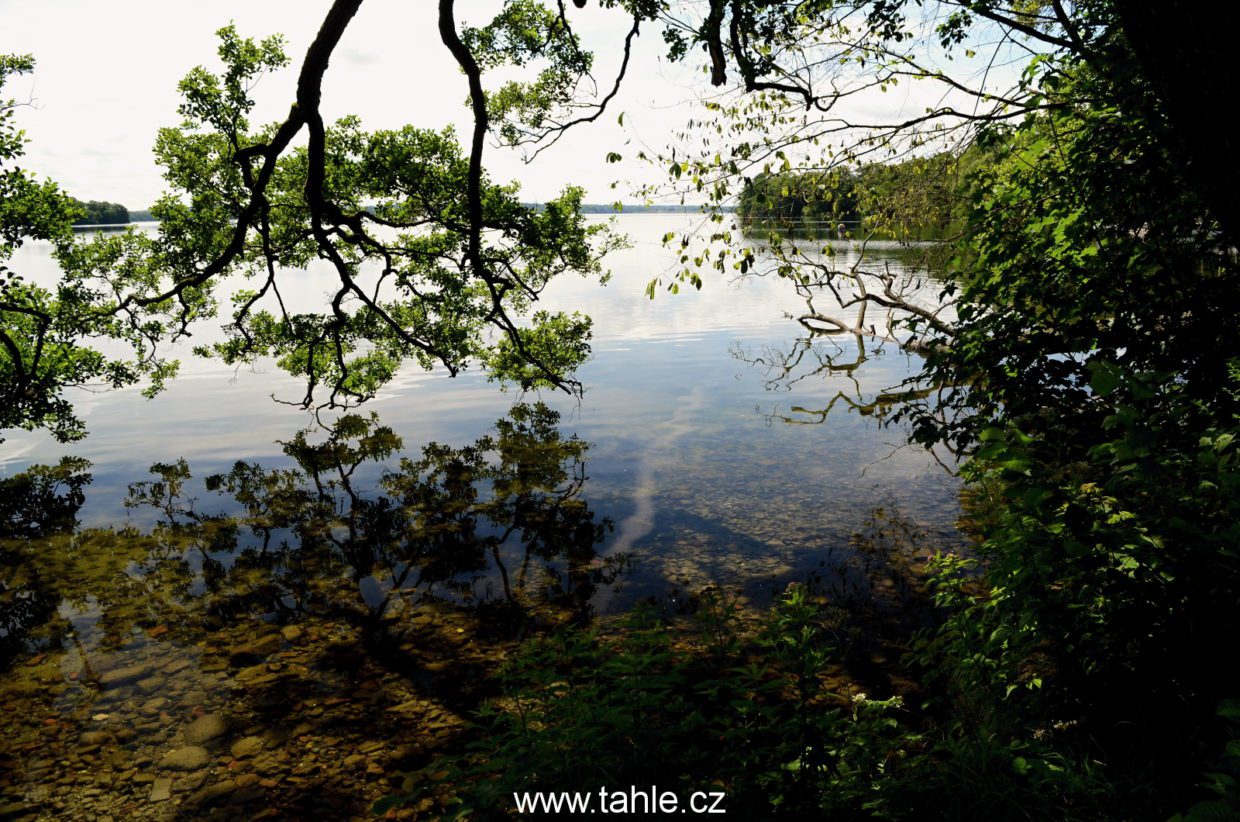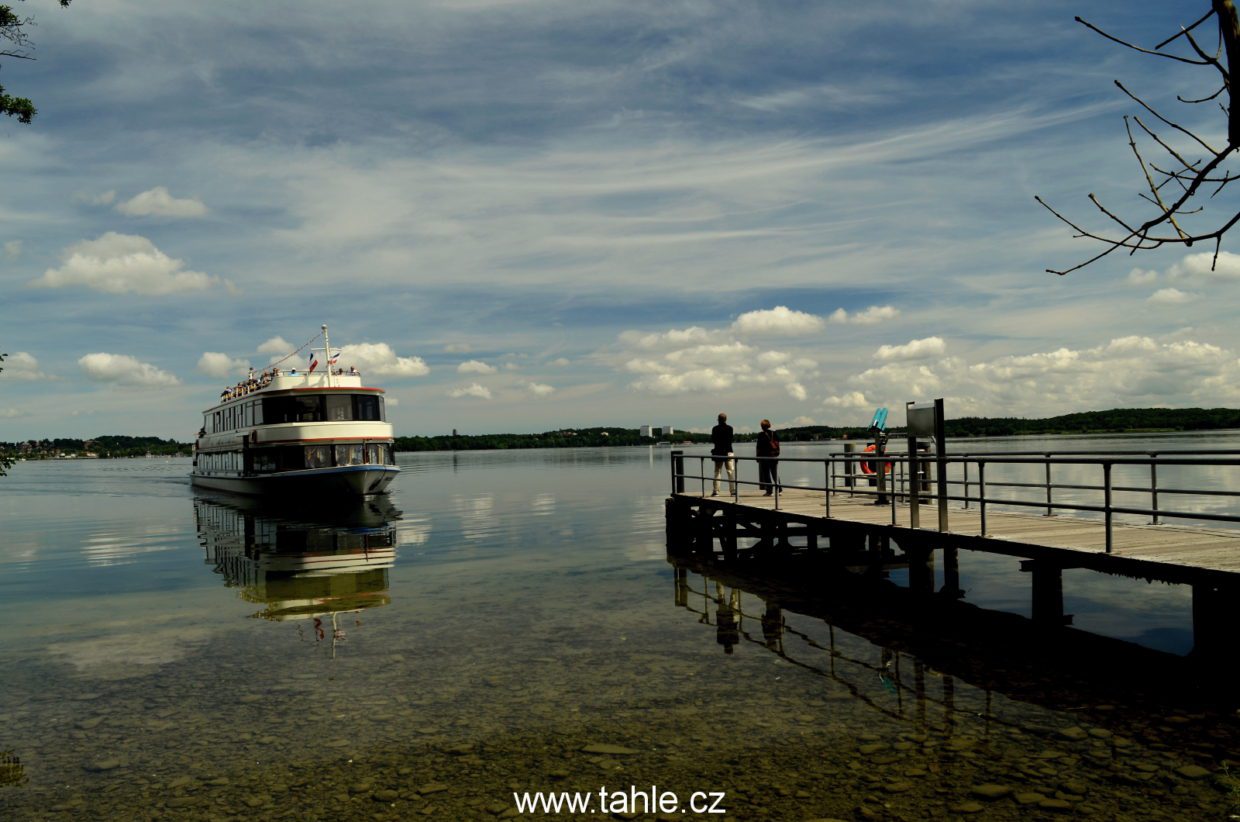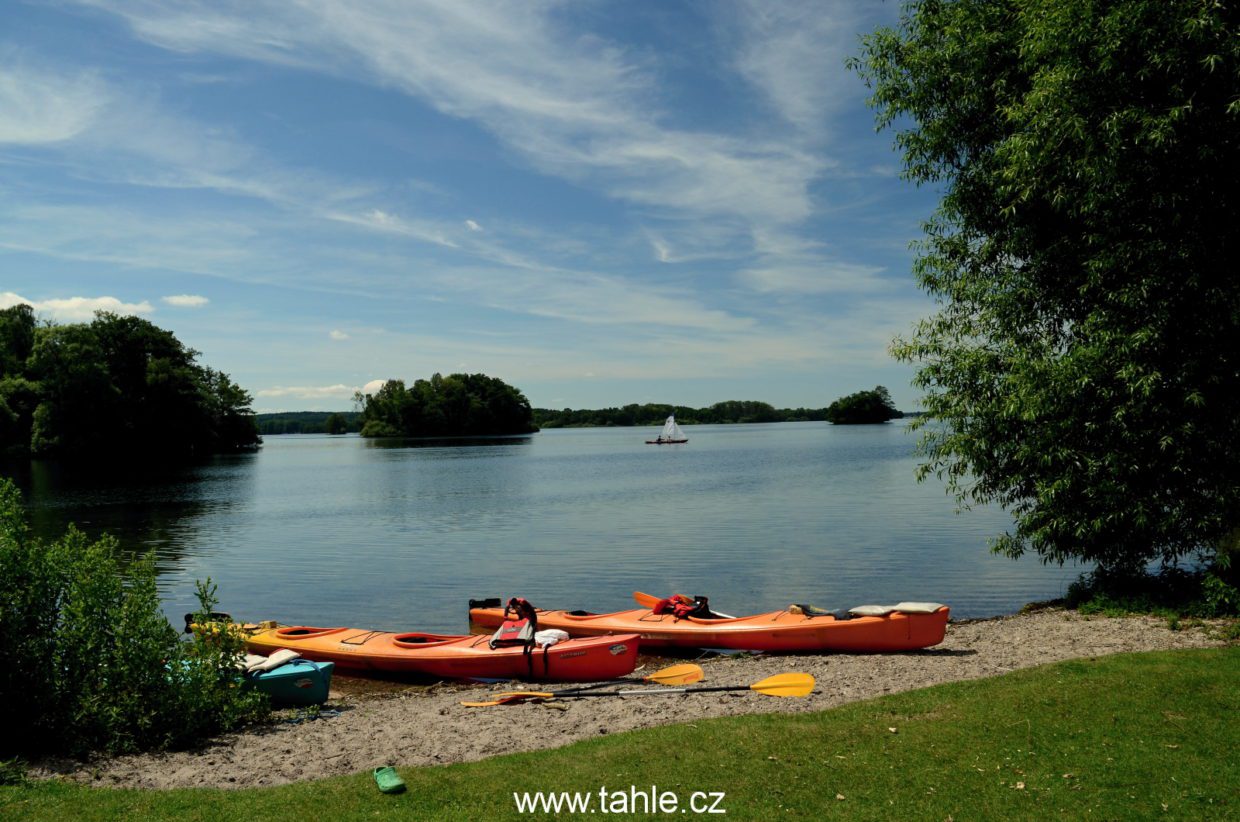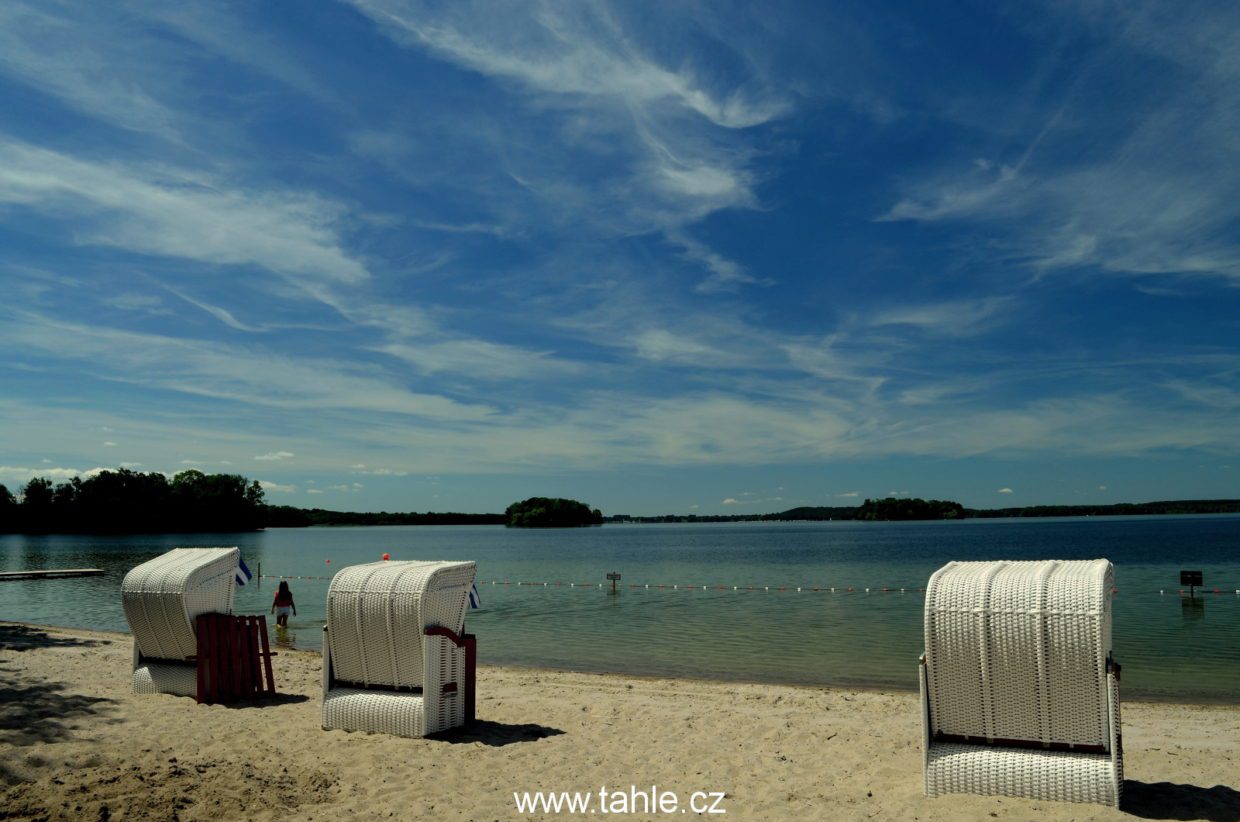Dnes se přesouváme z Hamburku do Lübecku , kde budeme bydlet. Cestou jsme si naplánovali ještě návštěvu v Jezera Plön. Láká nás město kolem dokola obklopené jezery.
Plánek Jezera Plön
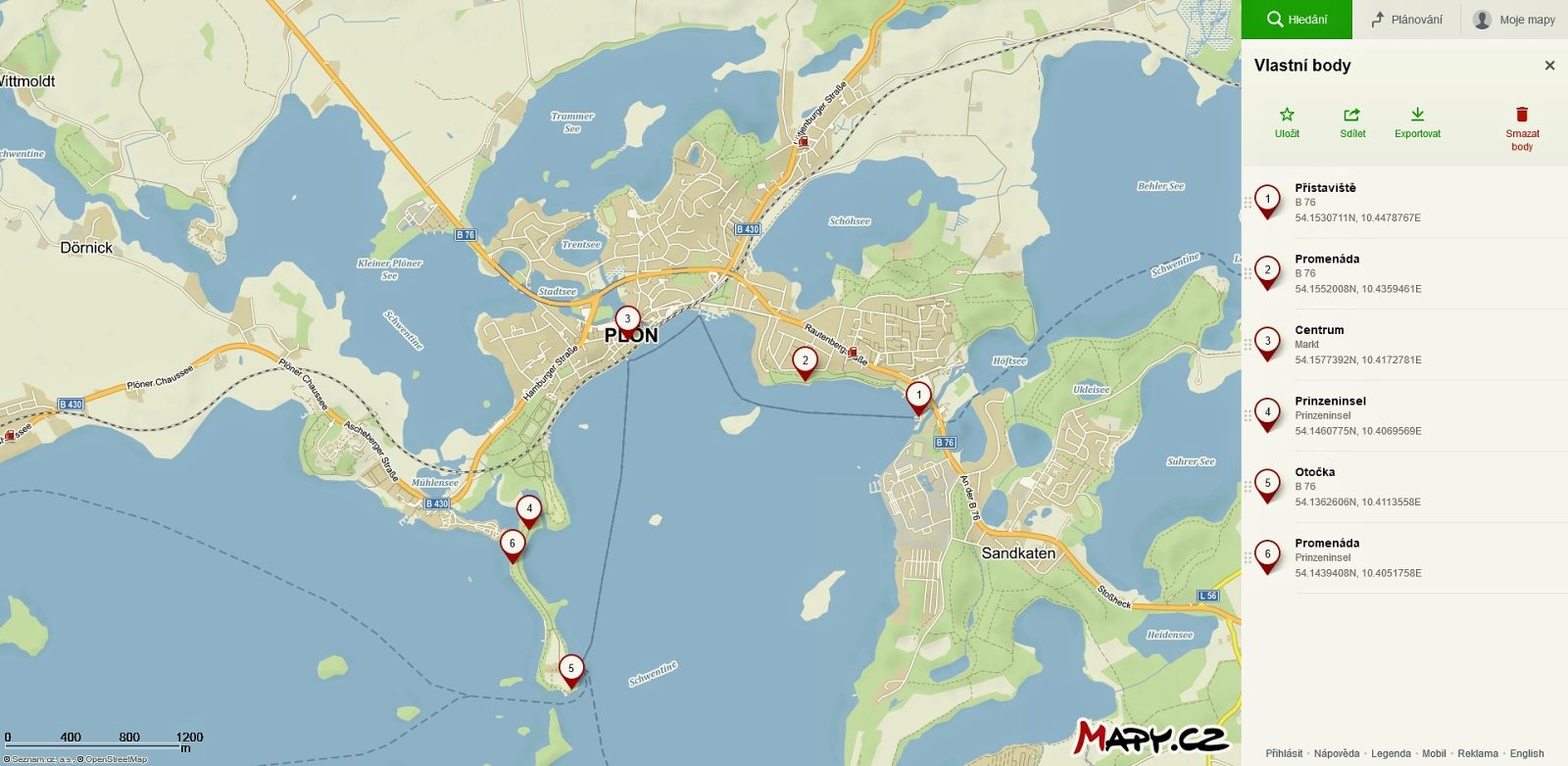
Jezera Plön

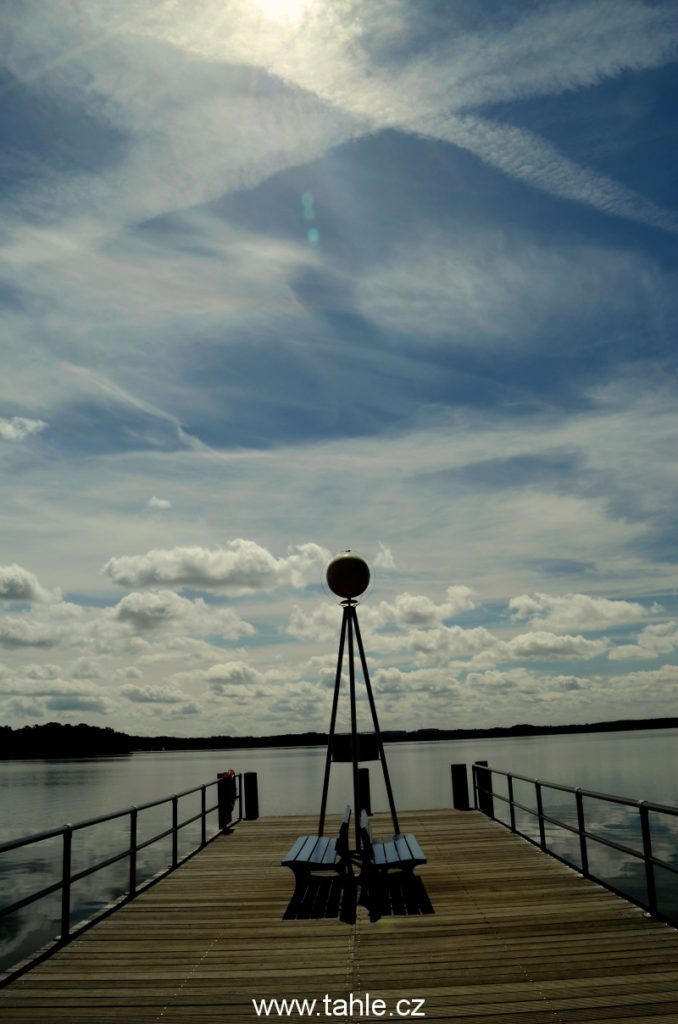
Kolem Jezera Plön
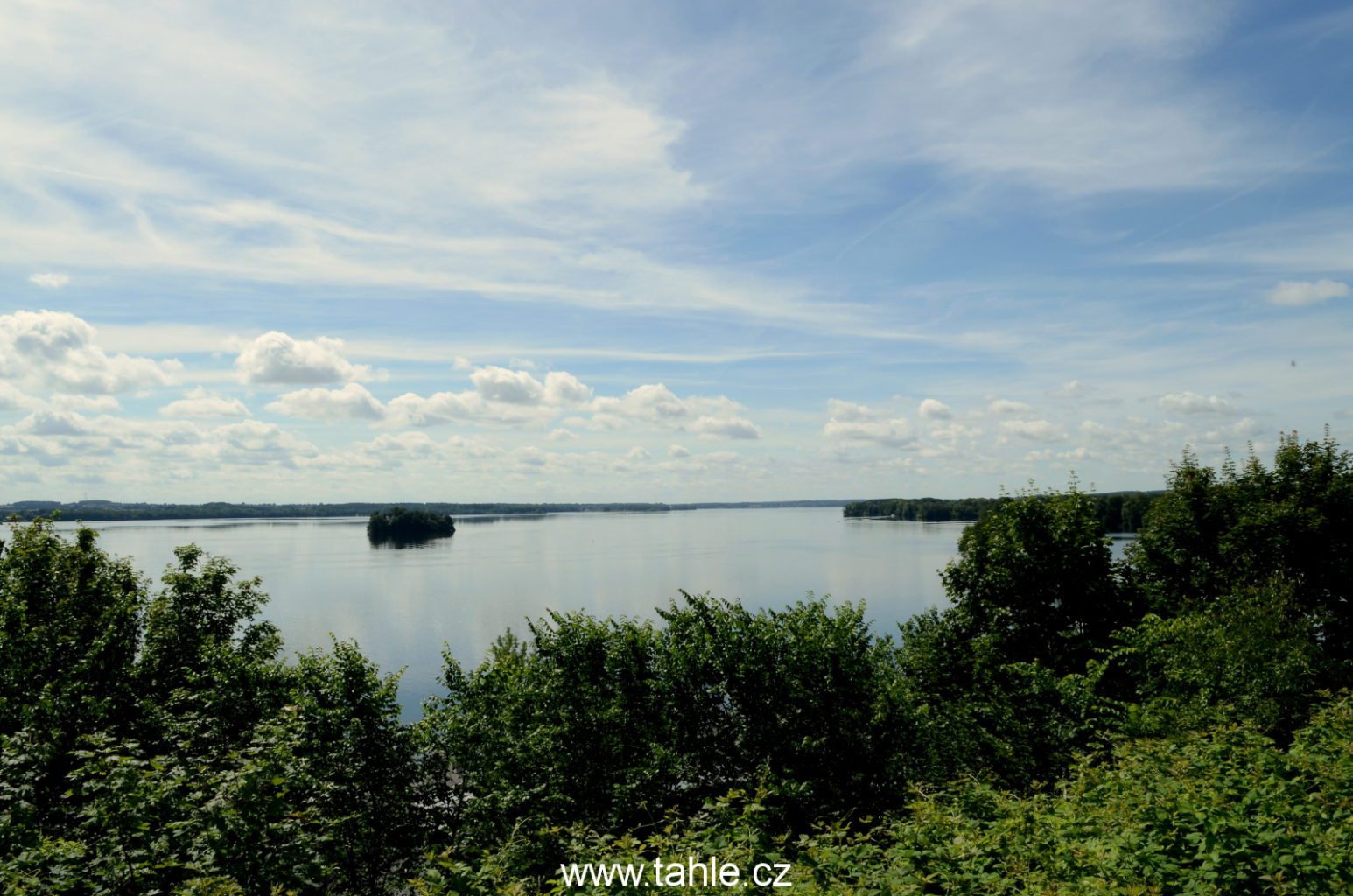
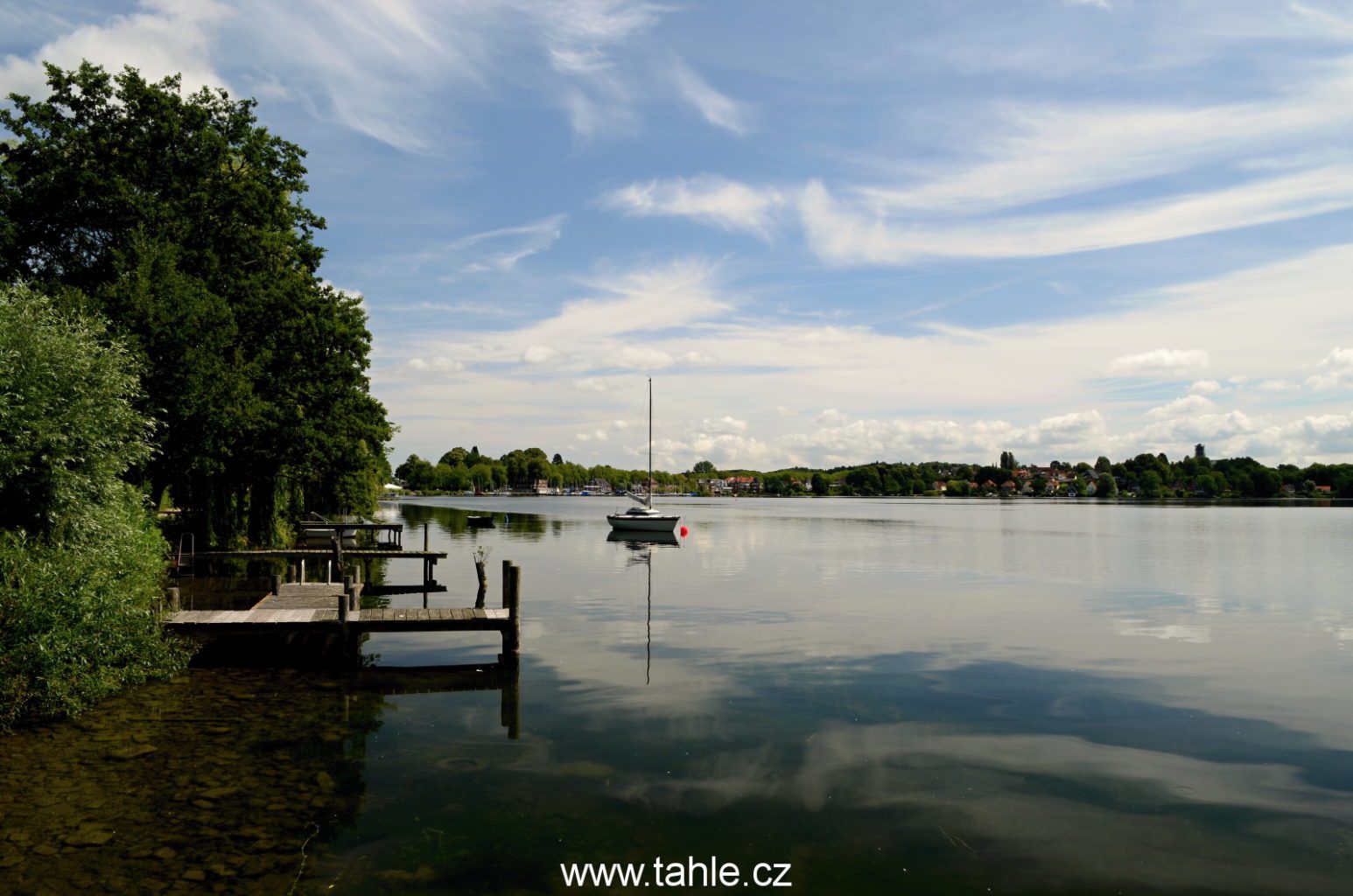
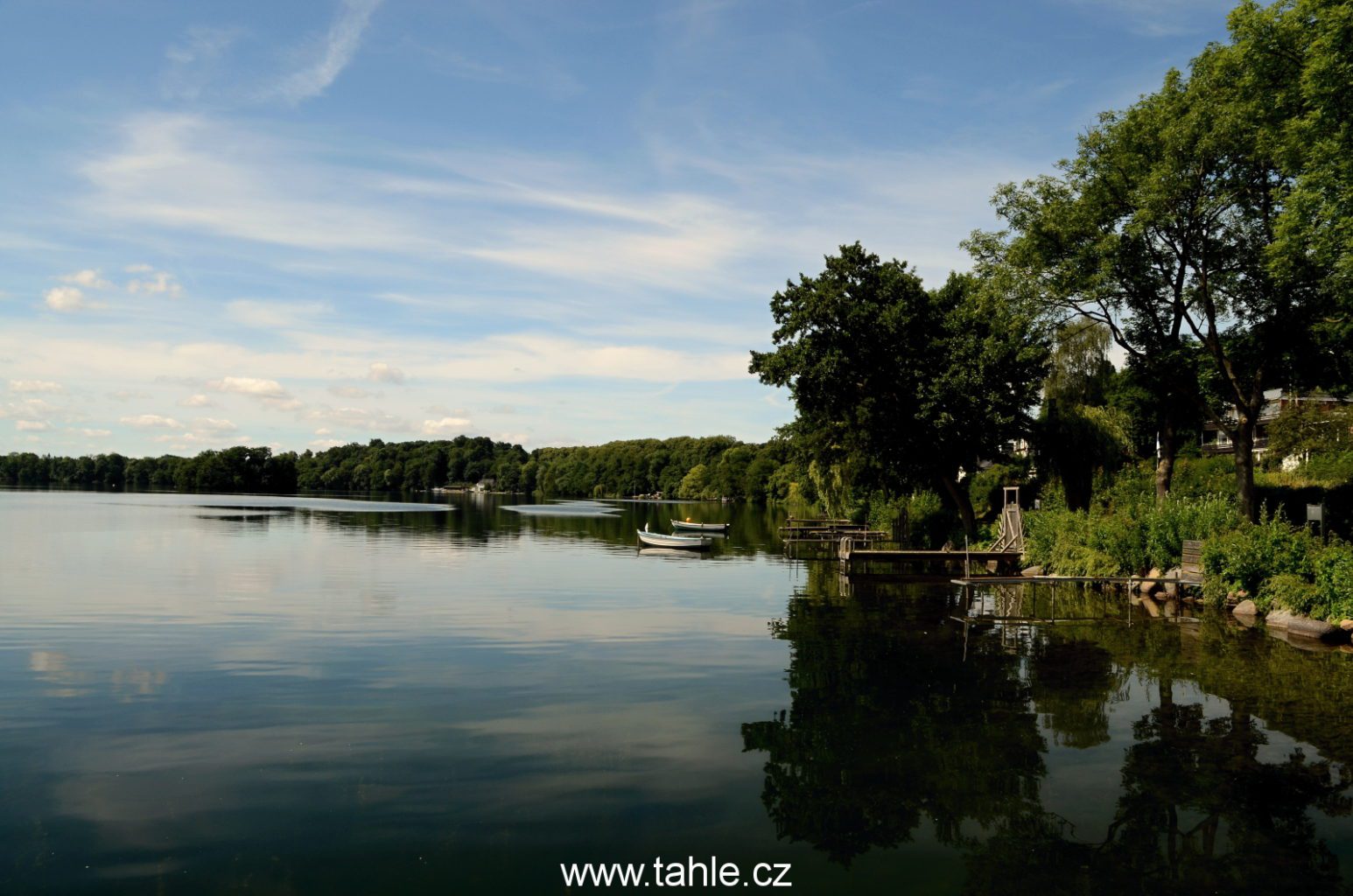
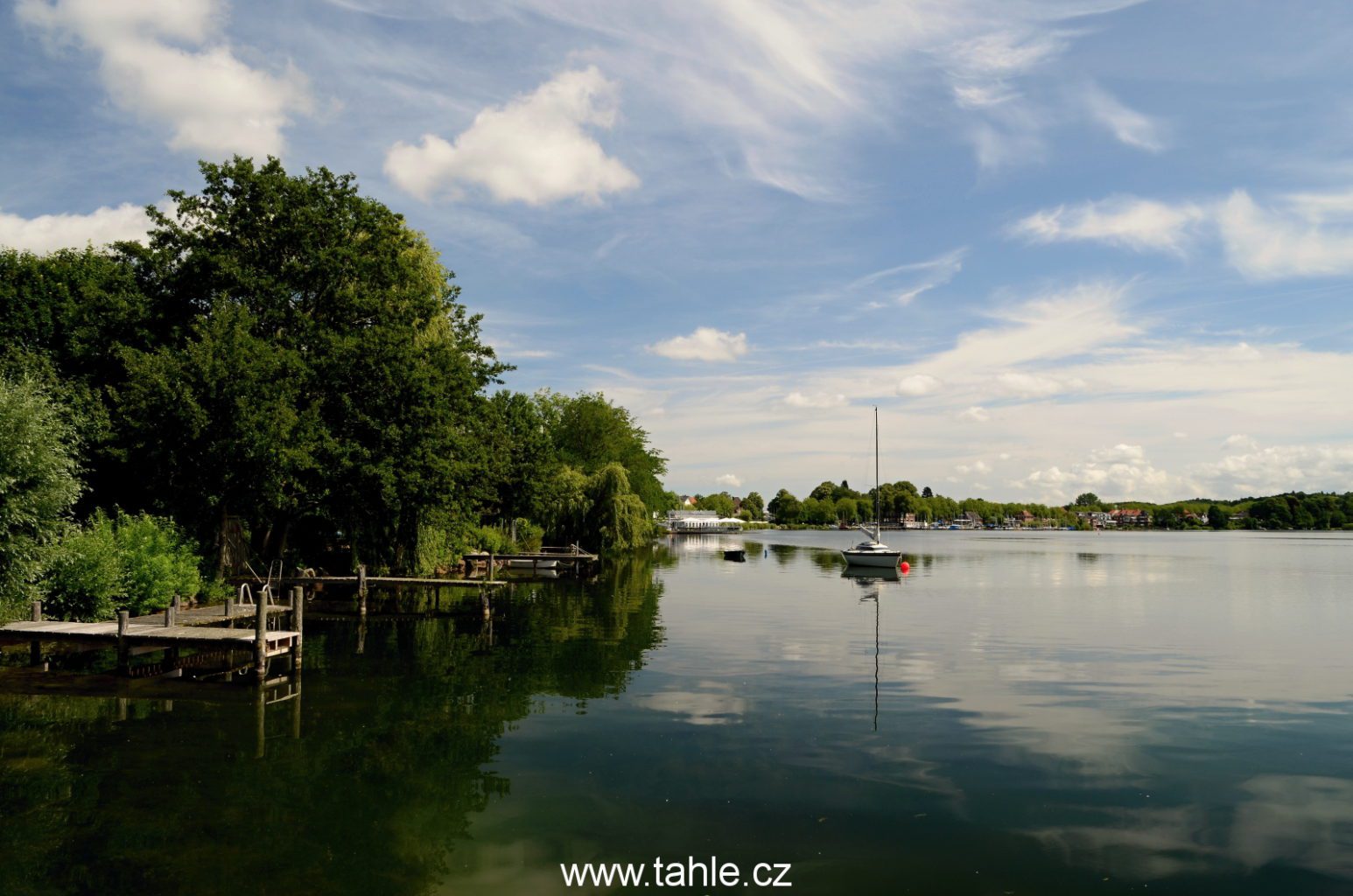
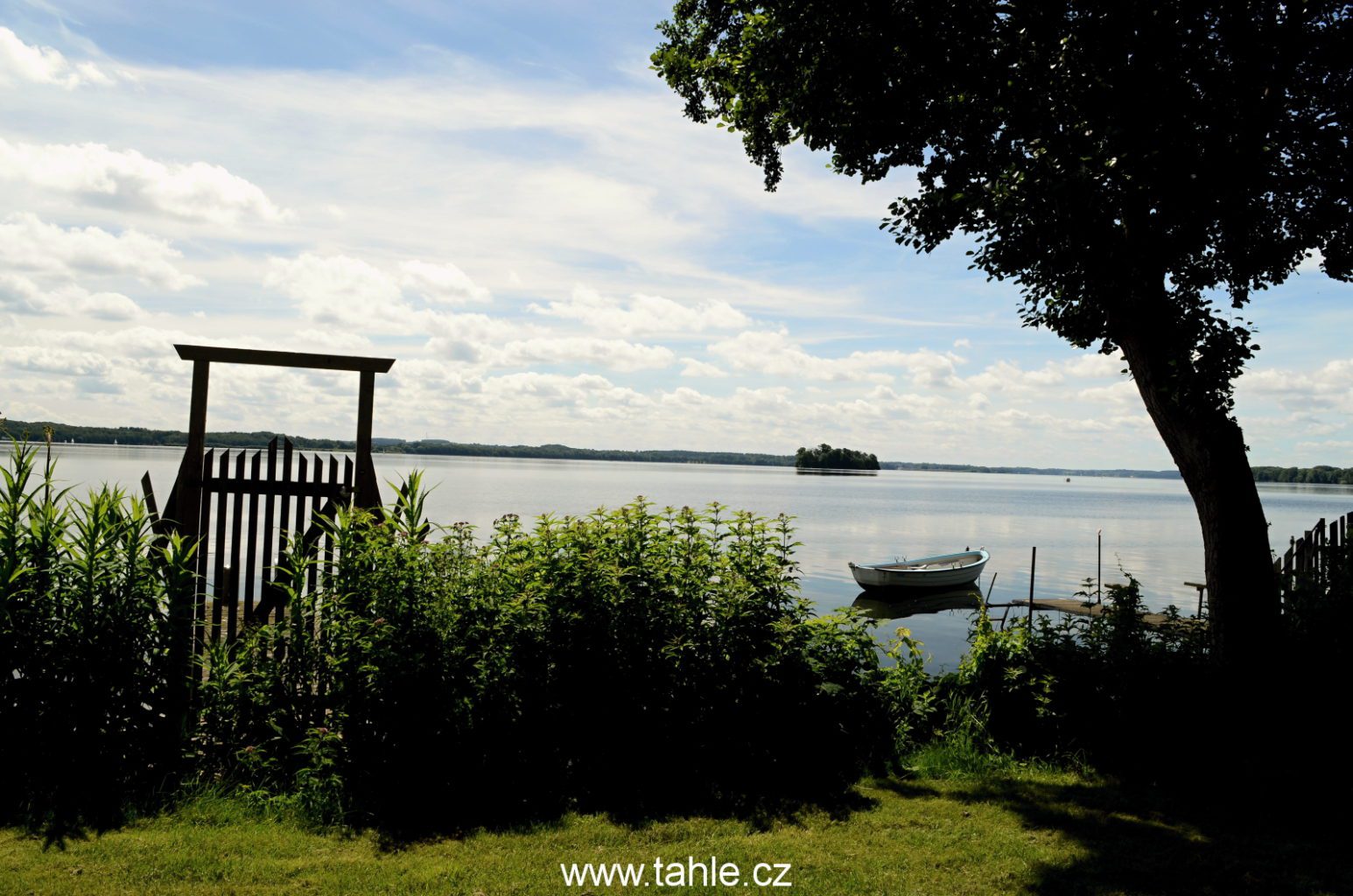
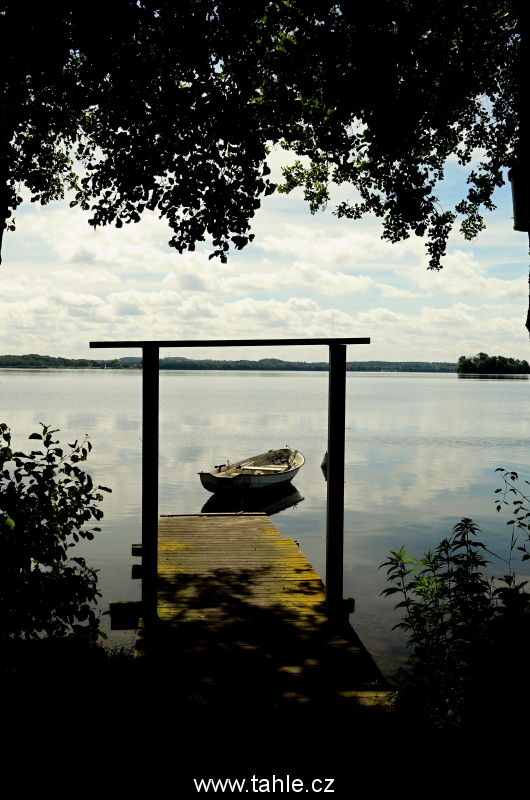
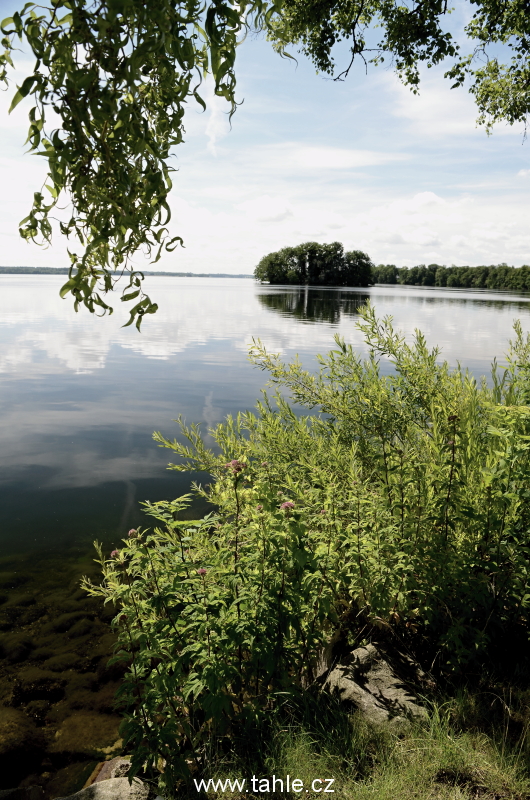
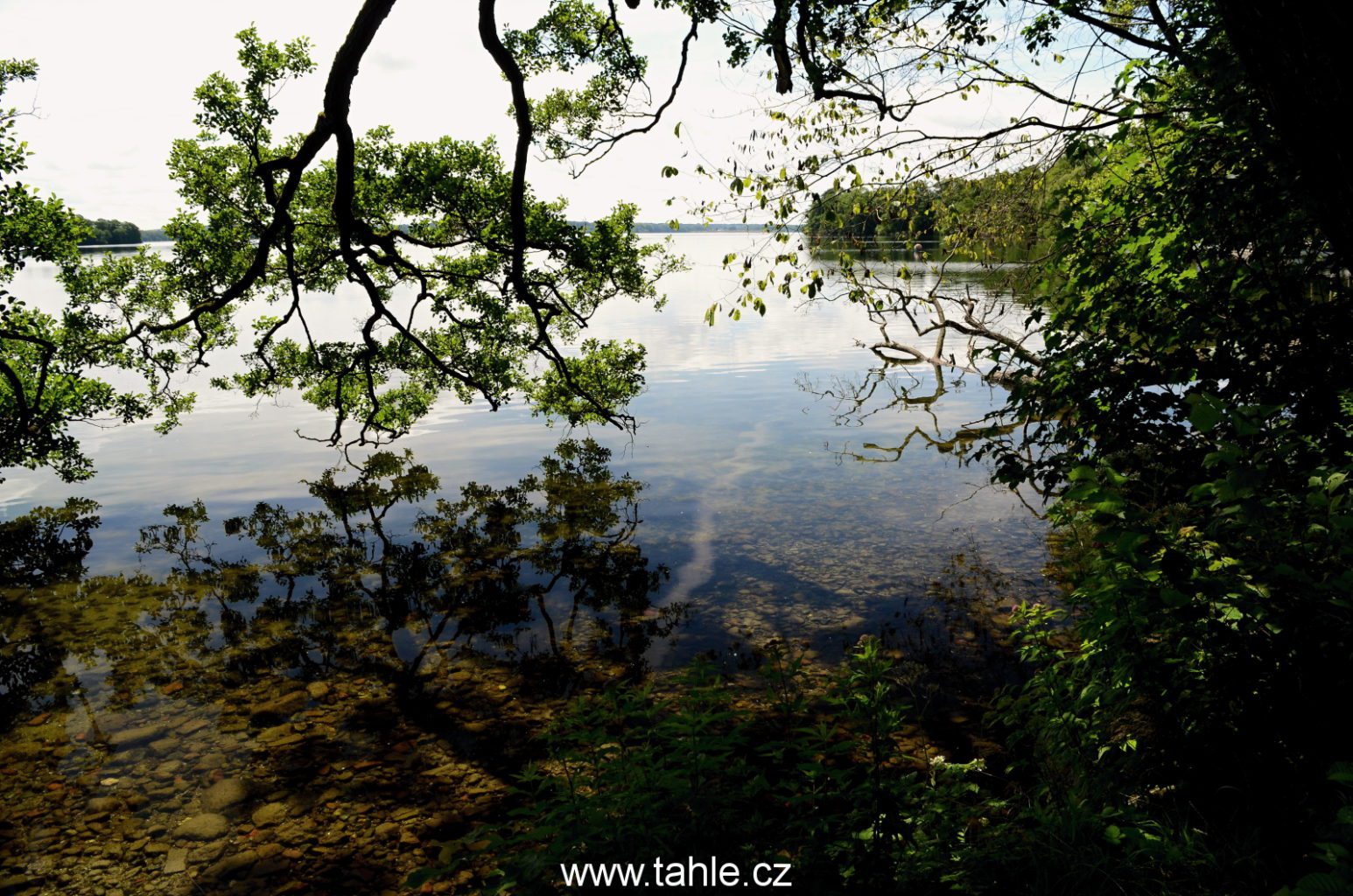
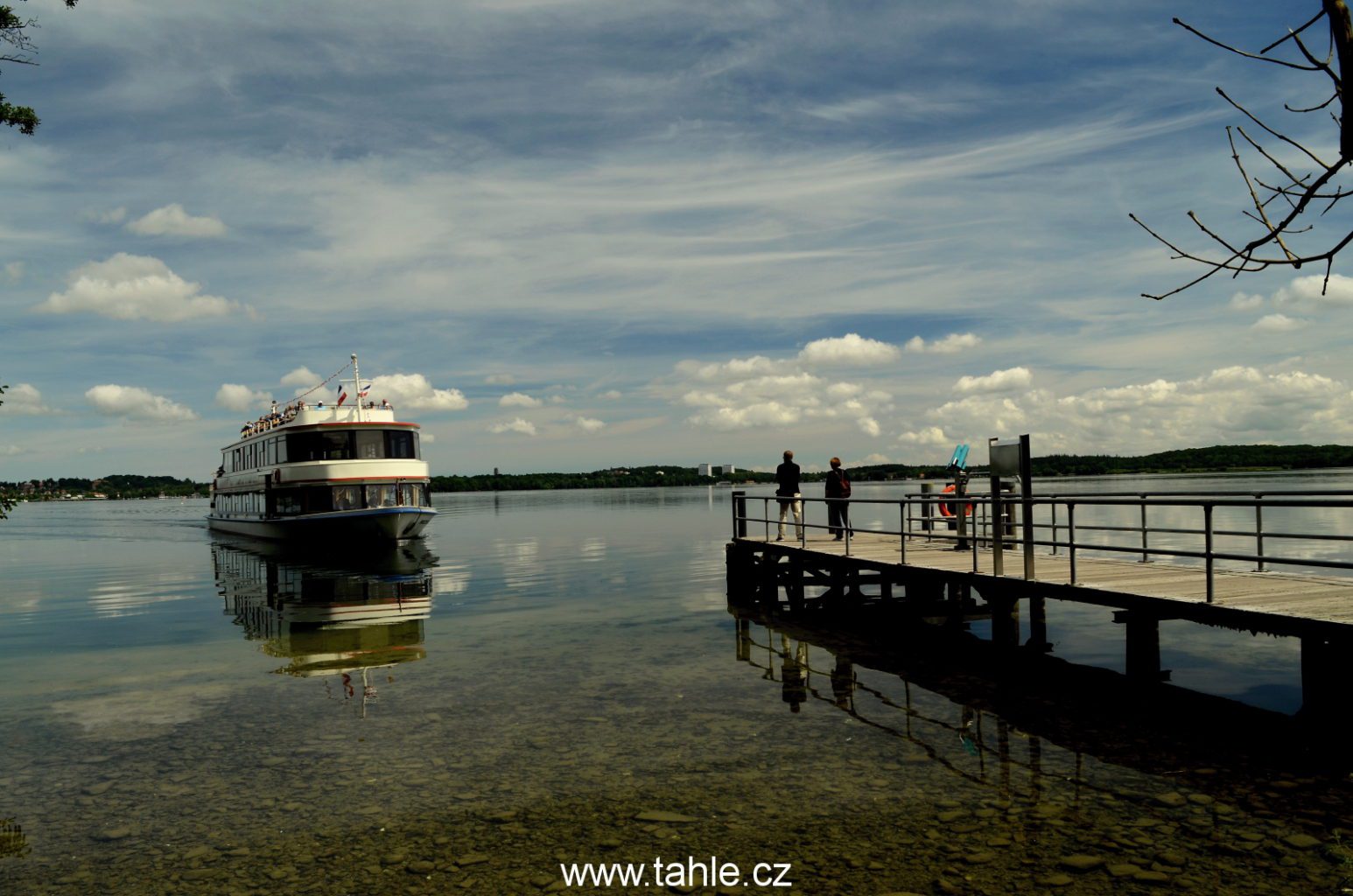


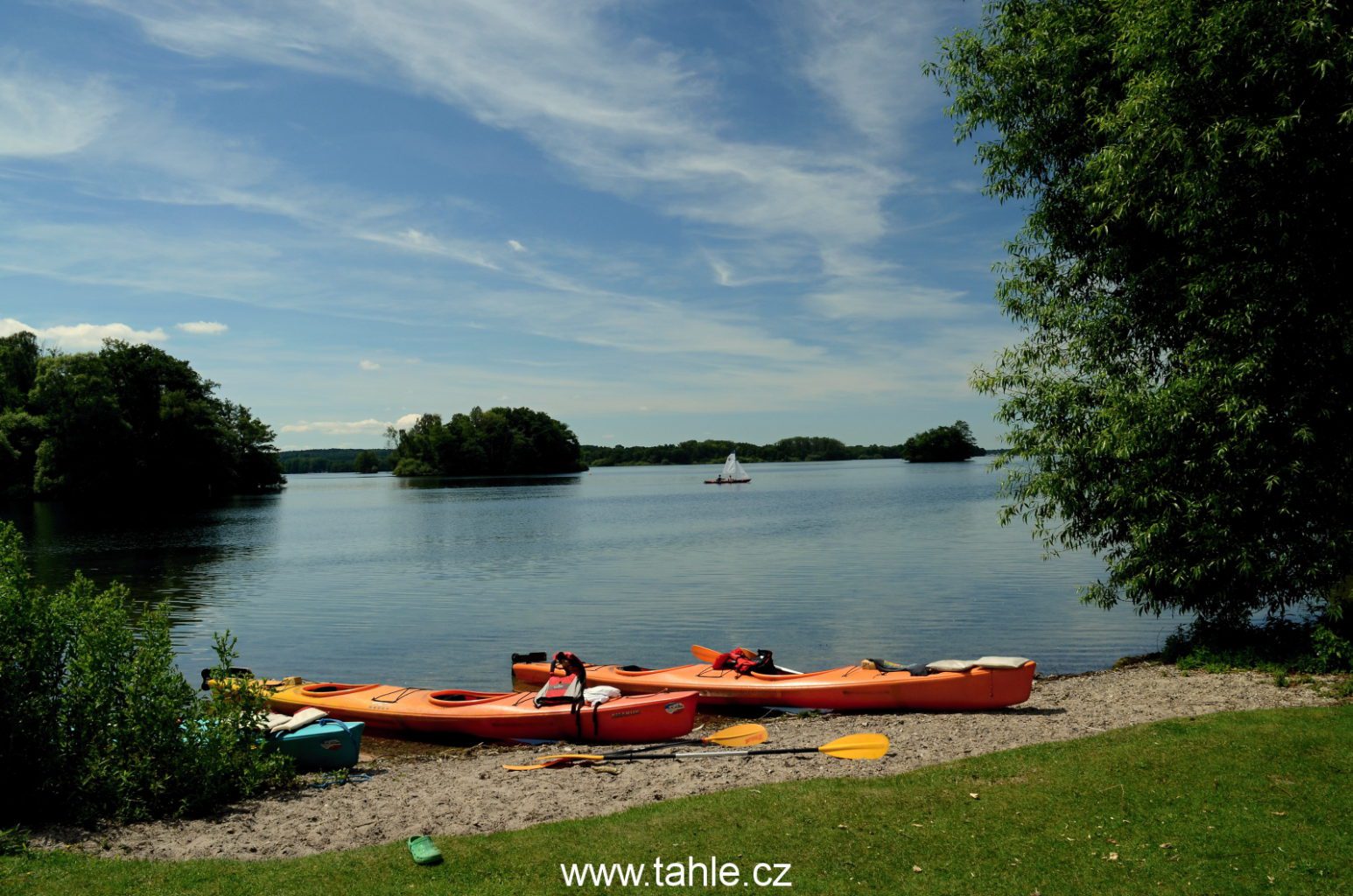
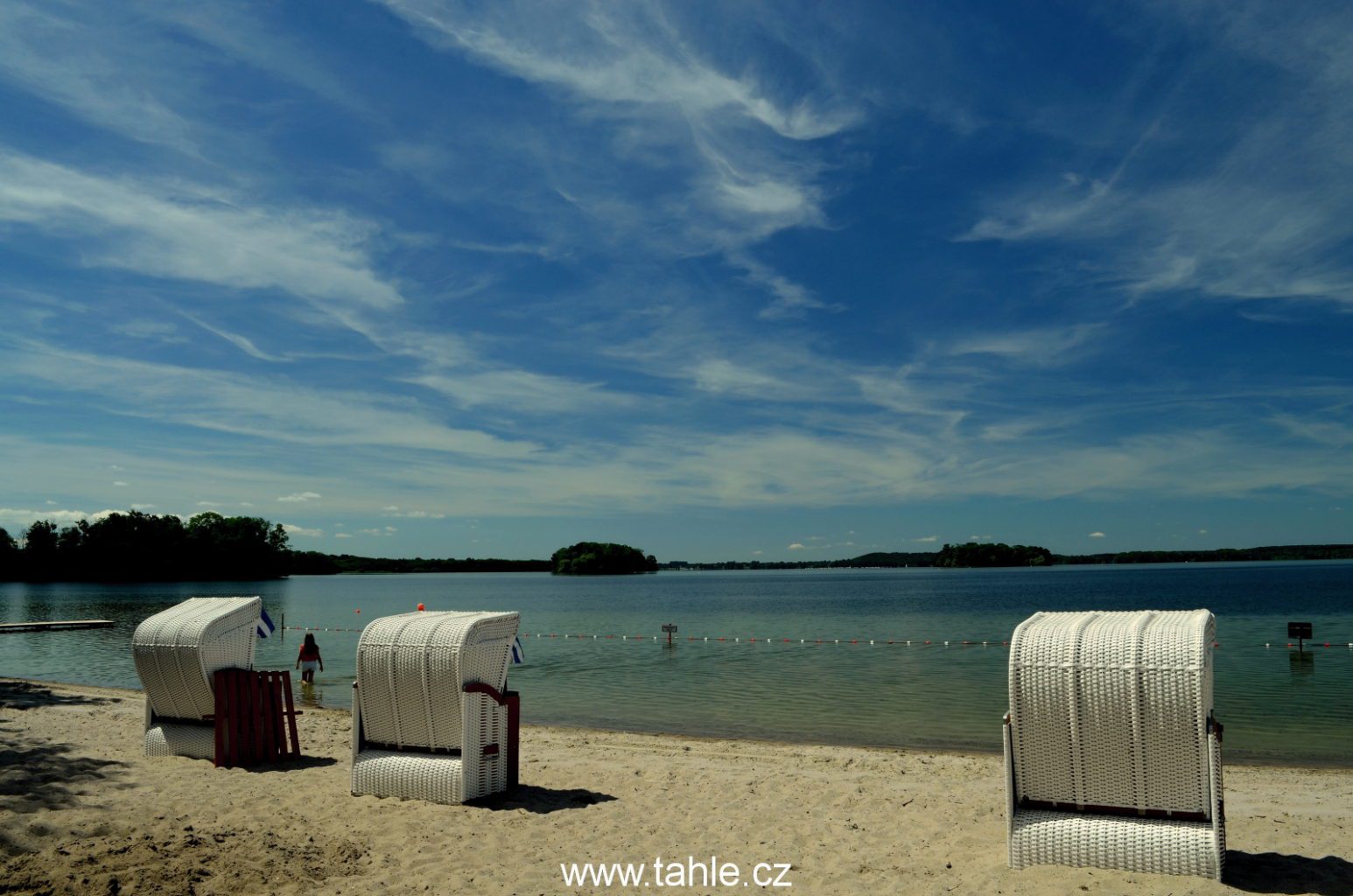
Tenhle výlet se nám líbil – zítra už budeme jen v Lübecku.
Mapa online Jezera Plön
Nalezené kešky
- GC6TCRC Mini-LP Treppe
- GC6N9T2 Wasserturm Plön
- GC6MQMC Bahnhof Plön
- GC5GHGQ Nicht erschrecken!
- GC67TCM Der schwarze Trompeter
- GC6XMZ7 Schlosspark Plön 2016
- GC6991C Die 3 Riesen
- GC693FX bedachter Kreisverkehr…
- GC4Y7B6 Biene Majas Bed & Breakfast
- GC51B9E Nicht nur Auguste V’s Lieblingsplatz
Místopis
Zdroj: Wikipedie EN
Město
Plön is the district seat in Schleswig-Holsteinand has about 8,700 inhabitants. It lies right on the shores of Schleswig-Holstein’s biggest lake, the Great Plön Lake, as well as on several smaller lakes, touching the town on virtually all sides. The town’s landmark is Plön Castle, a chateau built in the 17th century on a hill overlooking the town.
Grammar School
City has a grammar school with a 300-year history, and is home to a German Navy non-commissioned officer school and the Max Planck Institute for Evolutionary Biology. The town, nestled as it is in the hilly, wooded lake district of Holstein Switzerland (Holsteinische Schweiz), also has importance in the tourism industry.
Lubeck law
In 1236, Plön was granted town rights under Lübeck law. Strategically located on a narrow isthmus between the lakes and the River Schwentine, Plön remained a centre of the County of Holstein until the Danish royal house fell in the 15th century.
Capital
Between 1561 and 1729, Plön was the capital of the Duchy of Schleswig-Holstein-Sonderburg-Plön. The Duchy of Schleswig-Holstein-Plön emerged in 1622 as a result of succession in the Danish royal house. From 1633 to 1636 a Renaissance castle was built on the site of the old castle by Duke Joachim Ernest, and Plön became the capital of the small but independent princedom.
As a residence town Plön experienced a considerable increase in status. For example, in 1685 Duke John Adolphus („Hans Adolf“) founded the new town (Neustadt) northwest of the town in order to settle craftsmen here and thus increase the economic might of the duchy.
Under Charles Frederick the castle district was expanded with several baroque buildings and a pleasure garden. At that time the town had about 1,000 inhabitants and reached as far as the bridge over the Schwentine in the east and as far as the end of today’s pedestrian zone in the west. Both entrances were protected by gates.
Danish rule
In 1761 the Duchy fell back into the hands of the Danish crown. Plön remained under Danish rule until the Second Schleswig War in 1864.
Although it was the Danish king’s summer residence from time to time, it remained otherwise a sleepy provincial town of about 2,000 inhabitants.
The cultural life of the minor residence was charmingly described by Rochus von Liliencron in his „Childhood Memories“. In the mid-19th century, the Danish crown prince spent a few years of his summer vacation in Plön Castle, since when it has been decorated in white plaster with a gray roof.
Hohenzollern princes
In 1867 Plön became a county town following the introduction of Prussian administrative reforms. The Hohenzollern princes were educated for a time in Plön. The Princes‘ Island (Prinzeninsel) is still owned by the House of Hohenzollern. Since 1868, Plön Castle was a Prussian military school.
After World War I it became a boarding school that served as a 1933-1945 as a National Political Institutes of Education. Since 1946, it has again been a state boarding school.
WWII
After WWII Plon was chosen as the site for King Alfred School, a secondary school for British Forces children under the headmastership of Freddie Spencer Chapman with his staff at the Ruhleben Barracks site.
As such the town holds a place of affection with many former pupils across the world and the declining number of surviving teachers and their families. King Alfred School, Plön can rightly claim to be the first fully comprehensive school in the UK system.
This school existed from 1948 to 1959.
The Ruhleben Barracks site had been the German Navy U-Boat training school and has now reverted to a similar function as M.U.S the non-commissioned officer school.
The street nearby has a Lighthouse restaurant and down the street is a camping trailer park then a drug abusal hospital and a retirement castle.
There are interesting free time activities like canoeing, walking and wandering in the woods or on the great lake.
Nowdays
The German boarding school in Plön Castle was closed in 2001 under the state government of Heide Simonis and the castle was sold to the Fielmann optical company.
They re-opened it in October 2006, after extensive restoration work, as a school for opticians.
The total cost of refurbishment and reconstruction was 35 million euros. Today it is a non-profit training centre for the whole field of optics. This has strengthened the economy of the town of Plön, which has become more widely known, even internationally.
Each year the castle is home to six thousand Fielmann employees who receive training for anything up to a two-week period. Other students at the castle take part in B.A. and master optician courses.
The castle has extensive grounds and is one of the most beautiful castles in Schleswig-Holstein.
There are several restored historic buildings – such as the Princes‘ House (Prinzenhaus), Old Swimming Baths (Alte Schwimmhalle), Clock House (Uhrenhaus) – as well as shady avenues and old trees open to the public to stroll through and explore.
Parts of Günther Fielmann’s own antique collection can be viewed at the castle; it encompasses pieces from the major north European and French epochs since the mid-seventeenth century.
Princes´House
The Princes‘ House is affectionately called the „Pearl of the Rococo Period“.
It was previously used as a summer house and was given its present name when the sons of the last German Emperor, William II were taught in this building.
After several years of restoration, it is now again open to the public. The Uhrenhaus now contains the information centre for the Holstein Switzerland Nature Park.
The former imperial swimming pool is now a cultural forum, which is available for events and exhibitions. Evidence of the imperial era is still visible in many parts of Plon.
For example, there is on the Princes‘ Island, a thatched pavilion, from where there is a view of the Great Plön Lake – this was a favourite haunt of the Empress.
In the chapel at the Old Cemetery is an altar donated by Empress Augusta Victoria.
